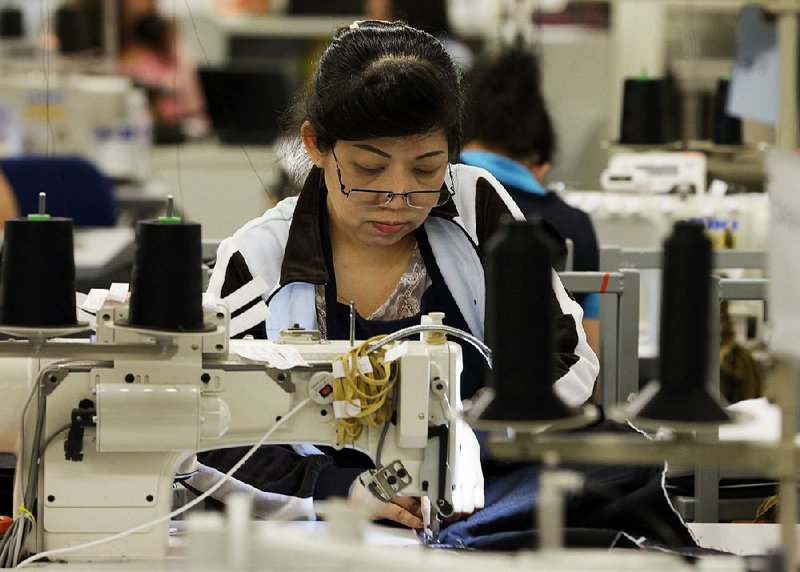WASHINGTON -- U.S. manufacturing contracted last month for the first time since February, as new orders and output plummeted and factories cut jobs.
The Institute for Supply Management said Thursday that its manufacturing index dropped to 49.4 in August from 52.6 in July. Any reading below 50 signals contraction.
The report raises the risk that a third-quarter growth rebound will be weaker than anticipated, and diminishes expectations that strength in the world's largest economy will broaden beyond household spending.
"It's one month, and there have been signs of stabilization," said Brett Ryan, a U.S. economist at Deutsche Bank Securities Inc. in New York. "But this confirms that we're not in a manufacturing recovery yet. We've stabilized, but it's not rebounding strongly by any means."
The report suggests that manufacturers continue to struggle as businesses spend less on machinery, computers and other large equipment. Auto sales have also leveled off this year after reaching a record level in 2015.
Still, the magnitude of the decline surprised many economists, since other recent measures of factory output, including surveys of manufacturers in the Philadelphia region, improved this month.
"The decline is hard to square with the signals coming from the timelier regional surveys," Steve Murphy, U.S. economist for Capital Economics, said in a research note. "The U.S. downturn also jars with the evidence of an improvement in global manufacturing, particularly in China."
A separate survey of China's manufacturers found that factory activity in that country expanded at the fastest pace in nearly two years. European manufacturers also reported growth in August, though at a slightly weaker pace than the previous month.
That suggests that a weak global economy, which had cut into U.S. factories' export sales, is fading as a head wind for U.S. manufacturers. A strong dollar had also lowered overseas sales and made imports cheaper.
But the Institute for Supply Management survey found that export orders increased in August at the same pace as the previous month.
The drop in overall orders likely reflects cutbacks by U.S. businesses and consumers, which could prove temporary. Americans are more confident in the economy, according to The Conference Board, and are spending more.
"I don't see any reason why it wouldn't tick back up," said Bradley Holcomb, chairman of the institute's survey committee. "It's just not consistent with where we've been for the past five months."
The Institute for Supply Management is a trade group of purchasing managers. It surveys about 300 manufacturers every month
U.S. productivity fell in the April-June quarter by a larger amount than first estimated, while labor costs accelerated sharply, the Labor Department reported Thursday.
Productivity declined at an annual rate of 0.6 percent, even worse than the 0.5 percent drop initially reported. It marked the third-straight quarter that productivity has fallen.
Labor costs rose at an annual rate of 4.3 percent, the biggest rise since a 5.7 percent increase in the fourth quarter. Labor costs had fallen at a 0.3 percent rate in the first quarter.
Productivity is the amount of output per hour of work. It is the major factor that supports rising living standards and has been lagging in the current seven-year economic expansion.
A third economic report released Thursday showed that slightly more Americans sought unemployment benefits last week.
Applications for unemployment aid rose 2,000 to a seasonally adjusted 263,000, matching its four-week moving average, the Labor Department said. The number of people collecting unemployment checks has fallen 4.4 percent from a year ago to 2.16 million.
Weekly requests for unemployment benefits have stayed below the threshold of 300,000 for 78 straight weeks, the longest streak since 1970. This indicates that employers are holding on to their workers in the belief that the broader U.S. economy will continue to grow.
Information for this article was contributed by Christopher S. Rugaber, Martin Crusinger and Josh Boak of The Associated Press and by Shobhana Chandra and Michelle Jamrisko of Bloomberg News.
Business on 09/02/2016
